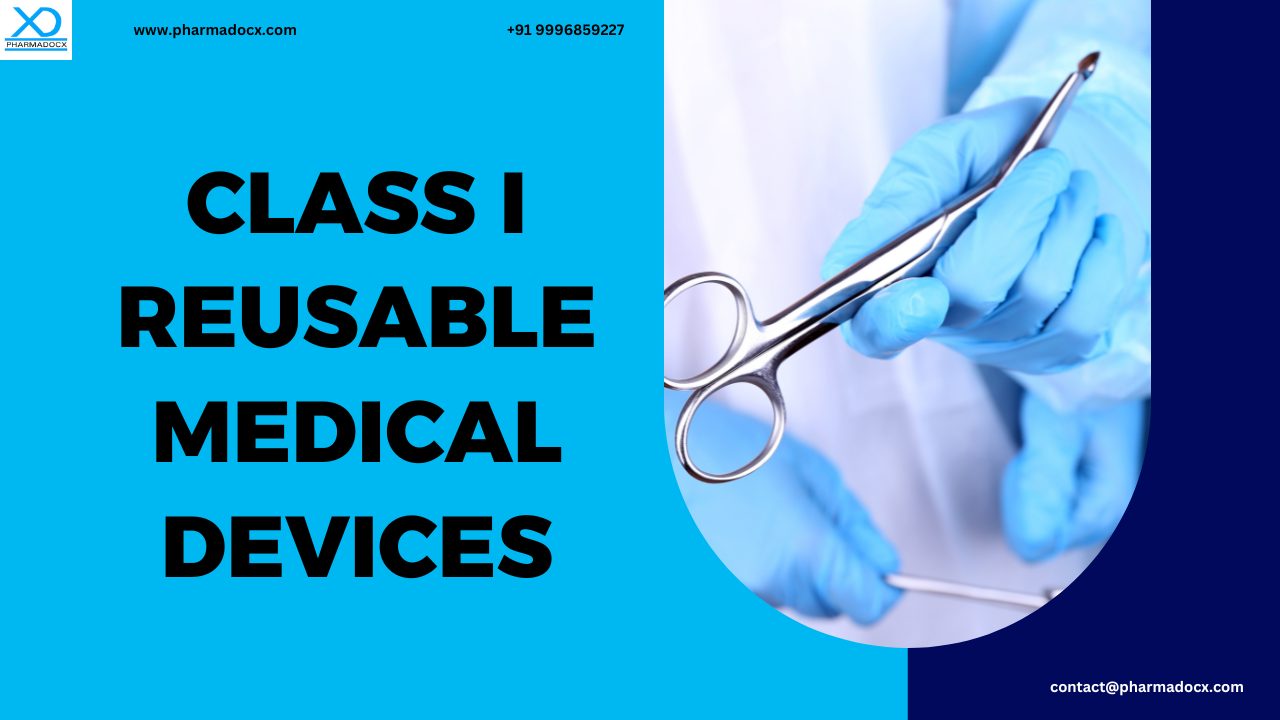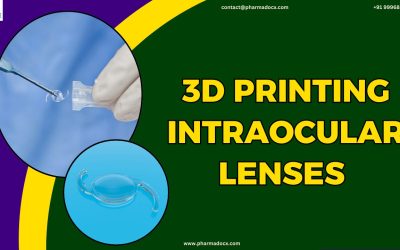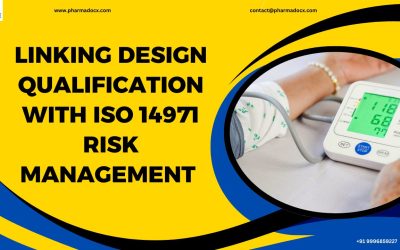Class I reusable medical devices (Class Ir) refer to a subclass of Class I medical devices under the EU Medical Device Regulation. They cover reusable surgical instruments. Class Ir are non-invasive tools intended for repeated use in surgical procedures. They require validated reprocessing procedures to ensure safety and performance over multiple cycles. Unlike general Class I devices, Class Ir devices require notified body involvement. The notified bodies play a vital role in ensuring the device remains safe and effective throughout its intended reuse lifecycle.
What are class I reusable medical devices?
Class I reusable medical devices are non-invasive instruments intended for repeated use in surgical procedures. As compared to class I devices, they are subject to enhanced regulatory scrutiny and specific conformity assessment procedures. They require validated reprocessing procedures (cleaning, disinfection, sterilization) to ensure safety and performance over multiple cycles of reuse. Furthermore, they require notified bodies for assessing the adequacy of reprocessing instructions and validation.
Thus, Class I reusable medical devices (Class Ir) are a distinct subclass of class I medical devices. These are intended to be reused after appropriate cleaning, disinfection, and/or sterilization. Examples of class Ir medical devices are scalpels, forceps, scissors, retractors, and endoscopes.
Why the special classification?
EU MDR introduced Class Ir to address infection control risks and reprocessing challenges associated with reusable devices. Unlike general Class I devices, Class Ir instruments:
- Pose higher risks due to repeated patient contact.
- Require validated reprocessing procedures to ensure safety and performance over multiple uses.
6 Key regulatory requirements for Class I reusable medical devices
We have provided a comprehensive breakdown of the key regulatory requirements for Class I reusable medical devices (Class Ir) under the EU MDR.
1. Classification and scope
Medical devices must meet the definition of Class I under MDR. If they are surgical instruments intended to be reused, they are reclassified as Class Ir.
2. Conformity assessment procedure
Notified Body involvement is required but only for the aspects related to reprocessing, such as cleaning, disinfection, sterilization, maintenance, functional testing. For all other aspects, such as design, performance, safety, the manufacturer can self-declare conformity.
3. Technical documentation
Manufacturers must compile and maintain comprehensive technical documentation covering the following:
- Device description and specification: Device type, intended use, classification rationale have to be provided. Materials, design drawings, and manufacturing methods are also necessary.
- Reprocessing validation: Detailed validated procedures for cleaning, disinfection, sterilization, and inspection and functional testing will be required. Validation must demonstrate that the device maintains safety and performance over its entire reuse lifecycle.
- Risk management (ISO 14971): Risk analysis must include reprocessing-related risks (e.g., contamination, degradation). Additionally, mitigation strategies and residual risk justification have to be provided.
- Instructions for use (IFU): The IFU should include step-by-step reprocessing instructions, maximum number of reuse cycles, warnings about improper reprocessing, and storage and handling guidance.
- Labeling: The device labelling must clearly indicate that the device is reusable and any limitations on reuse. Additionally, symbols used should be per MDR.
4. Post-market surveillance (PMS)
Class Ir devices require a post-market surveillance plan. The plan should monitor reprocessing-related incidents, wear and tear over reuse cycles, and user feedback on cleaning/sterilization.
5. Quality management system (QMS)
While full QMS certification (ISO 13485) is not mandatory for Class I, it is strongly recommended. For Class I reusable medical devices, the QMS must cover reprocessing validation, document control, complaint handling, and CAPA related to reprocessing failures.
6. Notified body certificate
The notified body issues a certificate limited to reprocessing aspects. This certificate must be referenced in the Declaration of Conformity.
Notified body requirement for Class I reusable medical devices
For Class I reusable medical devices (Class Ir) under the EU MDR, the Notified Body (NB) requirement is unique and narrowly scoped. Unlike general Class I devices (which are self-certified), Class Ir devices require partial Notified Body involvement, specifically for the aspects related to reprocessing.
What is the scope of notified body assessment?
The notified body only assesses the reprocessing procedures for class Ir medical devices. It covers the following
- Cleaning
- Disinfection
- Sterilization
- Maintenance
- Functional testing
- Packaging for reprocessing
- Instructions for Use (IFU) related to reprocessing
- Validation of the maximum number of reuse cycles
What does the notified body review?
The notified body will evaluate reprocessing validation data (e.g., ISO 17664, ISO 15883, ISO 14937) and risk management documentation (ISO 14971) focused on reprocessing risks. Additionally, it will focus on labeling and IFU for clarity, completeness, and compliance. Furthermore, evidence that reprocessing does not compromise device safety or performance will be evaluated.
Certificate issued by the notified body
The notified body will issue a certificate limited to the reprocessing aspects. This certificate is referenced in the Declaration of Conformity. The rest of the device (design, performance, safety) remains under manufacturer self-certification.
Pro tips for manufacturers
- Engage early with a notified body to clarify expectations and timelines.
- Ensure robust validation studies for all reprocessing steps.
- Align IFU content with EU MDR guidelines.
- Maintain traceability of changes to reprocessing instructions post-certification.
What are the major differences between Class I and Class Ir medical devices?
| Feature | Class I | Class Ir (Reusable medical devices) |
| Definition | Low-risk, non-invasive or transient-use medical devices | Reusable surgical instruments used in cutting, clamping, retracting, etc. |
| Examples | Thermometers, bandages, wheelchairs | Scalpels, forceps, scissors, curettes |
| Reuse | Typically single-use or non-surgical reusable | Specifically intended for repeated surgical use |
| Notified Body Involvement | Not required (self-declaration) | Required for reprocessing validation only |
| Technical Documentation | General MDR | Includes validated reprocessing procedures (cleaning, disinfection, sterilization) |
| Labeling Requirements | Standard MDR labeling | Must include reprocessing instructions, reuse limits, and warnings |
| Declaration of Conformity | Issued solely by manufacturer | Must reference notified body certificate for reprocessing |
| Post-Market Surveillance | Basic PMS plan | PMS must monitor reprocessing-related risks and performance degradation |
Technical documentation requirement for Class I reusable medical devices
We have outlined the documents required for Class I reusable medical devices licensing.
- Device description and specification: Device name, model, and intended purpose, classification rationale, description of design, materials, and manufacturing method, summary of variants and accessories, and UDI-DI and Basic UDI-DI assignment
- Reprocessing validation (Mandatory NB review area): Cleaning validation protocol and report, disinfection validation protocol and report, sterilization validation protocol and report, functional testing post-reprocessing, maximum number of reuse cycles (with justification), packaging and handling instructions for reprocessing, risk analysis specific to reprocessing (ISO 14971), and evidence that reprocessing does not compromise safety/performance.
- Risk management file: Risk analysis covering biological, mechanical, and reprocessing risks, risk evaluation and control measures, residual risk justification, and linkage to clinical evaluation and PMS data.
- Labeling and IFU: The device label must include reuse symbol and warnings. Additionally, the IFU should include step-by-step reprocessing instructions, limitations on reuse, inspection and functional testing guidance, storage and handling instructions.
- Clinical evaluation: Clinical evaluation report (CER), literature review or equivalence justification, post-market clinical follow-up (PMCF) plan (if applicable).
- Declaration of conformity: Reference to notified body certificate (reprocessing scope only).
- Notified body certificate: Certificate covering reprocessing validation.
- Post-market surveillance (PMS): PMS plan tailored to reprocessing risks, procedures for trend analysis and vigilance, and Periodic Safety Update Report (PSUR) for Class Ir (if required).
Pharmadocx Consultants: Your trusted EU MDR support
Therefore, Class I reusable medical devices are not essentially a high-risk device. They are a subclass of class I medical devices. They require more scrutiny due to the need for infection control and performance consistency over multiple uses. Furthermore, manufacturers of class Ir devices must engage a notified body. Hence, class I and class Ir have certain differences in regulatory requirements. Are you confused about the regulatory requirements for your class Ir devices? Email at [email protected] or call/Whatsapp on 9996859227 and our team will be more than happy to help.





